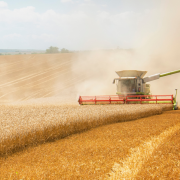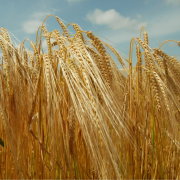Clubroot Prevention In Oilseed Rape
Author: Jimmy Staples
Cover crops are a fundamental element of any sustainable arable farm and provide many benefits to both our soils and wider farming enterprises. These benefits include but are not limited to improving soil health, preventing soil erosion, combating weeds, increasing soil water infiltration and availability, mopping up nutrients, helping to break pest cycles and increasing biodiversity.
There has also been a large increase in the acreage of cover crops sown this year, which has mainly been driven by the new Nitrates rules, particularly the stubble cultivation rule. Most farmers opted to plant a cover crop while carrying out stubble cultivations. Farmers understand their importance in a sustainable farming system and should be acknowledged for embracing cover crops of their own volition.
There are many different species used in the cover crop mixes that are popular across the country but a number of these, particularly the grazing mixes, have a high inclusion of brassicas. The fodder rape and leafy turnip mix are the main ones. The continuous use of cover crop mixes with a high inclusion rate of brassica species in the same field can increase the risk of clubroot occurring.
While I haven’t personally come across a case of clubroot in oilseed rape, anecdotal evidence would suggest that it is more of an issue where fodder rape and leafy turnip cover crops are being grazed continuously with sheep or cattle over a number of years in the same field. I and many of my colleagues work with farmers who have been using cover crop mixtures for 10, 15 and even 20 years now, with oilseed rape in their rotation, and have never had a case of clubroot on their farms. With that said, prevention is always better than cure and being aware of any possible risks and making informed decisions about rotation and cover crop mixes is good agronomic practice.
What is Clubroot?
Clubroot is a soil borne fungus that can affect all cultivated and wild members of the brassica family. Clubroot can live in the soil for up to 15 years and infected plants develop characteristic galls on the roots which reduce the plant’s ability to take up water and nutrients, leading to stunted growth and reduced yields.
In the UK, yield losses of 0.3 tonne to the hectare per 10% of oilseed rape plants affected have been reported. Total crop failure is also possible in extreme cases.
Clubroot Prevention
As with any IPM strategy, early identification is crucial. There are several simple and straightforward measures that can be taken to prevent clubroot from becoming an issue on farm:
- Maintain drainage: Clubroot will move through the soil water. Poorly drained, compacted soils are at a higher risk for clubroot infection. Keep field drains flowing and if drainage work is needed, make it a priority where oilseed rape is intended to be sown.
- Limit the movement of infected soil: Clubroot can spread from field to field on affected soil. If clubroot is identified in a field, then a plan should be formulated to minimise soil moving from that field to a clean field via machinery, footwear, straw or crops.
- Keep the pH right: Crops grown in lower pH soils have a greater risk of developing severe symptoms. Another reason to ensure your soil pH is optimum.
- Control weeds and volunteers: Weeds such as charlock, shepherd’s purse and volunteer rape will all host clubroot. Ensuring control of these weeds throughout the rotation will help to reduce the risk of clubroot developing.
Further Information
To view more articles from our Winter Newsletter, please click here.
Get In Touch
For the most up to date information on our products and services, please click here or follow us on Facebook and Twitter.











